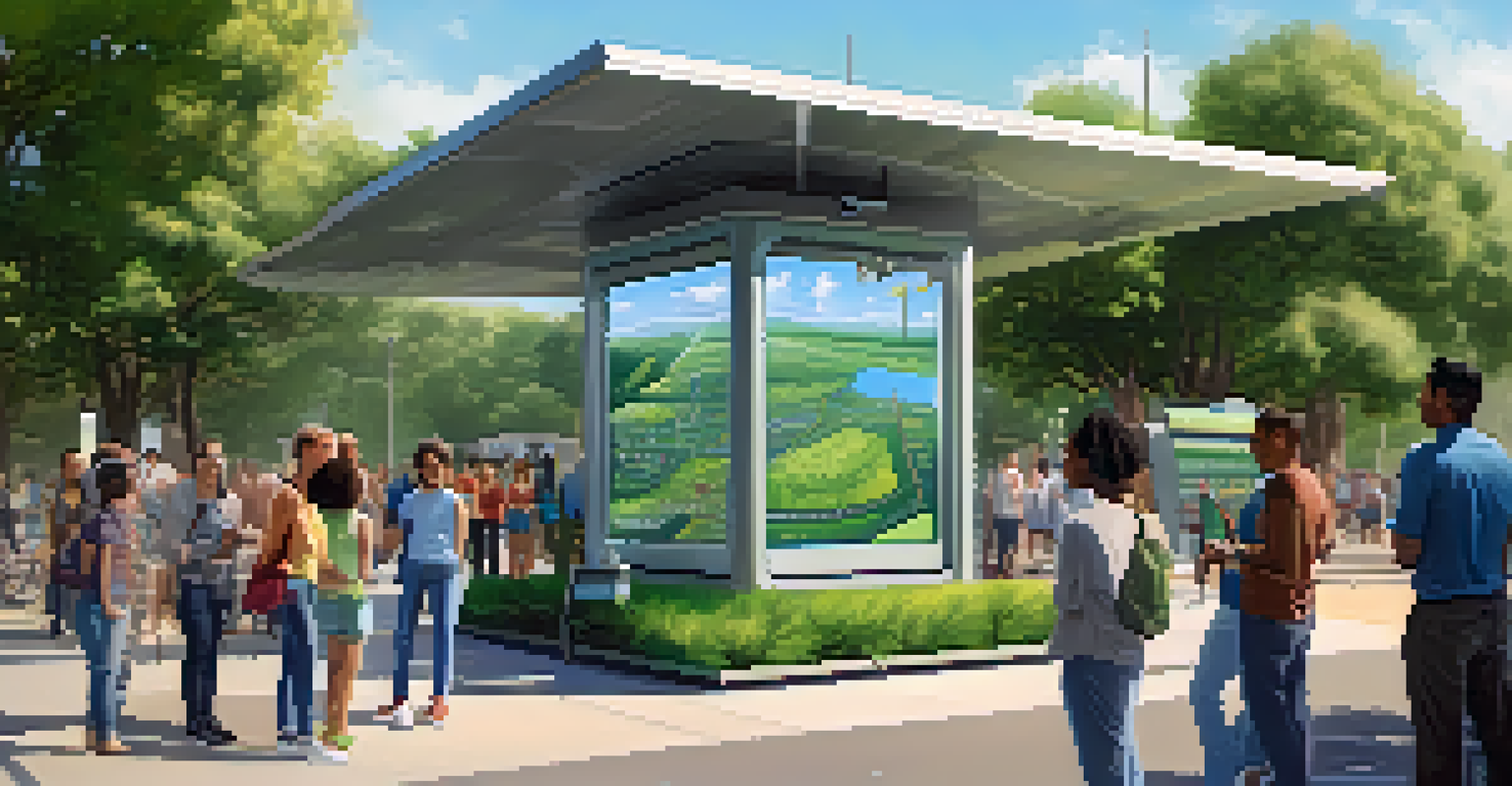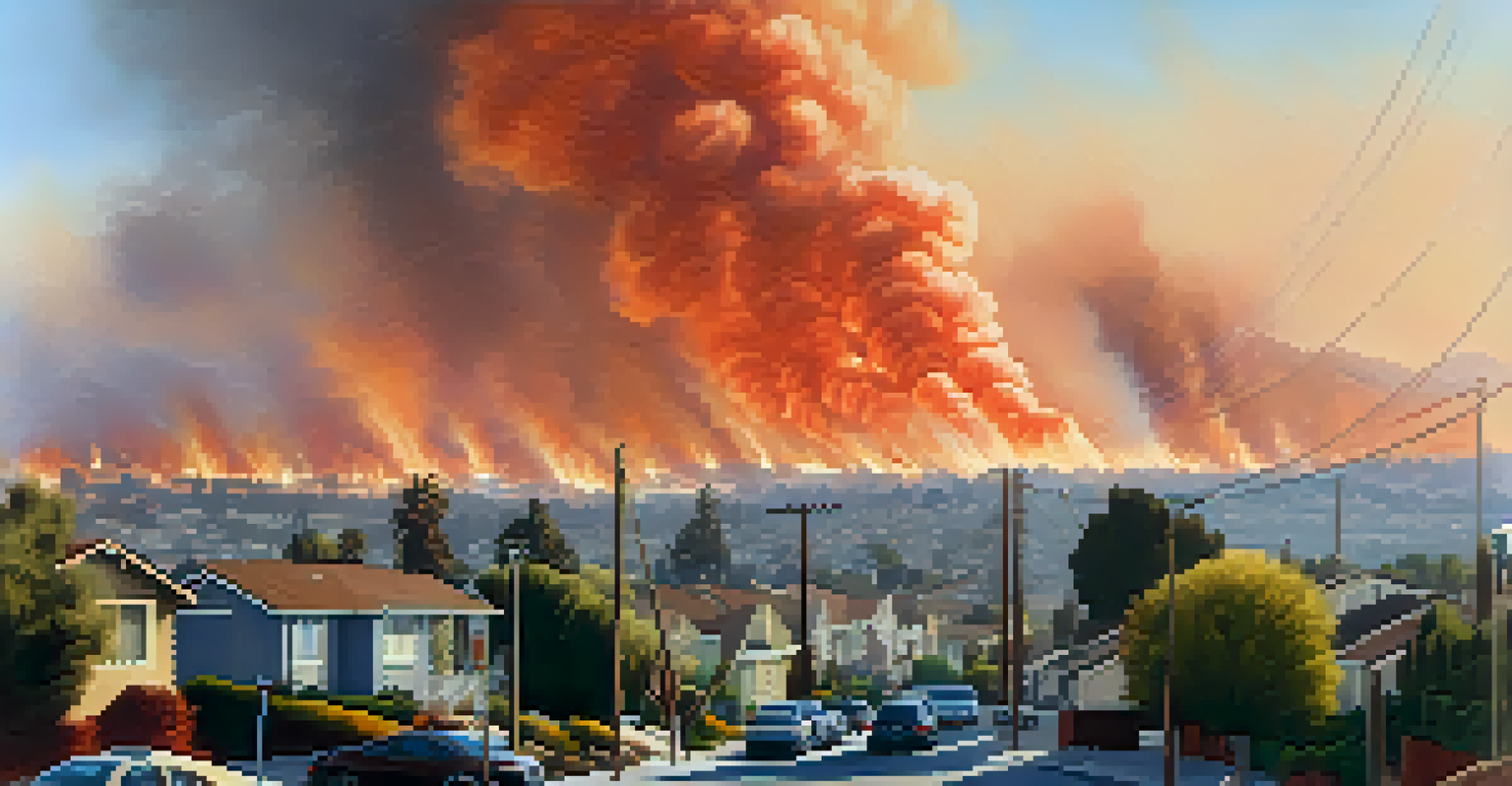Government Regulations Impacting Air Quality in San Jose

Overview of Air Quality Regulations in San Jose
San Jose, like many urban areas, faces challenges with air quality. Various government regulations aim to mitigate pollution and improve air standards. These regulations often stem from local, state, and federal initiatives designed to protect public health and the environment.
The air we breathe is not just the air we breathe. It is a reflection of our choices, our policies, and our community's commitment to health and sustainability.
The Bay Area Air Quality Management District (BAAQMD) plays a key role in regulating air quality in San Jose. They implement rules that limit emissions from vehicles, industries, and other sources. Understanding these regulatory frameworks helps residents grasp how air quality is maintained.
Compliance with these regulations is crucial for ensuring cleaner air. Violations can lead to penalties, but more importantly, they can negatively impact the health of the community. Thus, these regulations are not just rules; they are essential for promoting a healthier lifestyle.
Impact of Vehicle Emissions Regulations
Vehicle emissions are a significant contributor to air pollution in urban areas. In San Jose, regulations targeting these emissions aim to reduce the amount of harmful pollutants released into the atmosphere. For instance, California's strict vehicle emissions standards often set the benchmark for other states.

These standards encourage the adoption of cleaner technologies, such as electric and hybrid vehicles. As a result, residents are increasingly driving greener cars, which contributes to improved air quality. This shift not only helps the environment but also aligns with the city’s sustainability goals.
Importance of Air Quality Regulations
San Jose's air quality regulations are essential for protecting public health and the environment by mitigating pollution from various sources.
Moreover, local initiatives like carpooling programs and public transport improvements further support these regulations. By providing alternatives to single-occupancy vehicles, San Jose promotes a collective effort in reducing traffic emissions. This interconnected approach yields more significant benefits for air quality.
Industrial Emission Standards and Their Role
Industries are another major source of air pollution, making it essential for San Jose to enforce strict emission standards. Regulatory bodies set limits on pollutants released during manufacturing processes. These regulations ensure that local industries operate within safe environmental guidelines.
To be a successful advocate for clean air, you must be informed, engaged, and ready to collaborate with your community.
By adhering to these standards, industries not only comply with the law but also contribute to a healthier community. Many businesses have invested in cleaner technologies and practices to meet these requirements. This transition can often result in reduced costs and improved efficiency in the long run.
Furthermore, community awareness and pressure can drive industries to adopt even more stringent measures. Local advocacy groups play a vital role in holding businesses accountable and promoting transparency. This collaboration between residents and industries enhances the overall air quality in San Jose.
Effect of Wildfire Regulations on Air Quality
Wildfires present a unique challenge to air quality in California, including San Jose. Government regulations aimed at wildfire prevention and management significantly impact local air quality. These regulations often focus on land management practices and controlled burns to reduce fuel loads.
During wildfire season, the smoke can severely degrade air quality, affecting the health of residents. By implementing proactive measures, such as clearing brush and creating firebreaks, the government helps mitigate these risks. This not only protects air quality but also safeguards homes and ecosystems.
Community Engagement Enhances Compliance
Active community involvement in air quality issues leads to tailored regulations that better reflect local needs and priorities.
Moreover, public awareness campaigns inform residents about air quality levels during wildfire events. Understanding when to stay indoors or use air purifiers can make a significant difference. This community knowledge, combined with regulatory efforts, fosters resilience against air quality challenges.
Community Involvement in Air Quality Regulation
Community involvement is crucial in shaping air quality regulations in San Jose. Local meetings and forums provide residents with a platform to voice their concerns about air quality issues. This engagement encourages transparency and allows for more tailored regulations that meet the needs of the community.
Additionally, citizen science initiatives empower residents to monitor air quality in their neighborhoods. By collecting data on pollution levels, community members can advocate for necessary changes. This grassroots approach often leads to stronger regulations that reflect the community’s priorities.
Moreover, partnerships between local government and community organizations are vital. These collaborations can lead to successful programs that promote clean air initiatives. When residents feel invested in air quality efforts, the overall effectiveness of regulations improves.
The Role of Technology in Monitoring Air Quality
Advancements in technology play a critical role in monitoring air quality in San Jose. Governments and organizations utilize sophisticated tools to track pollution levels in real time. This data-driven approach enables more responsive and effective regulatory measures.
For instance, air quality sensors placed throughout the city provide valuable information on pollutant concentrations. Residents can access this data through mobile apps and websites, allowing them to stay informed. This transparency enhances community engagement and encourages proactive measures.
Technology's Role in Monitoring Air Quality
Advancements in technology enable real-time monitoring of air quality, allowing for more effective regulatory responses and community engagement.
Furthermore, technology aids in predicting pollution trends and potential health impacts. By analyzing data patterns, policymakers can implement targeted regulations to address specific air quality issues. This strategic approach is essential for adapting to changing environmental conditions.
Looking Ahead: Future Air Quality Regulations
As air quality concerns continue to evolve, future regulations in San Jose are likely to become more stringent. The increasing impact of climate change and urbanization necessitates a proactive approach to air quality management. Policymakers will need to consider innovative strategies to address emerging challenges.
Collaboration between local governments, businesses, and residents will be key in shaping these future regulations. Engaging stakeholders in the decision-making process ensures that diverse perspectives are considered. This collaborative effort can lead to more effective and sustainable policies.

Ultimately, the goal remains clear: to improve air quality for the health and well-being of San Jose residents. As regulations adapt to meet these goals, continuous community involvement and technological advancements will play a pivotal role. Together, these efforts can pave the way for a cleaner, healthier future.